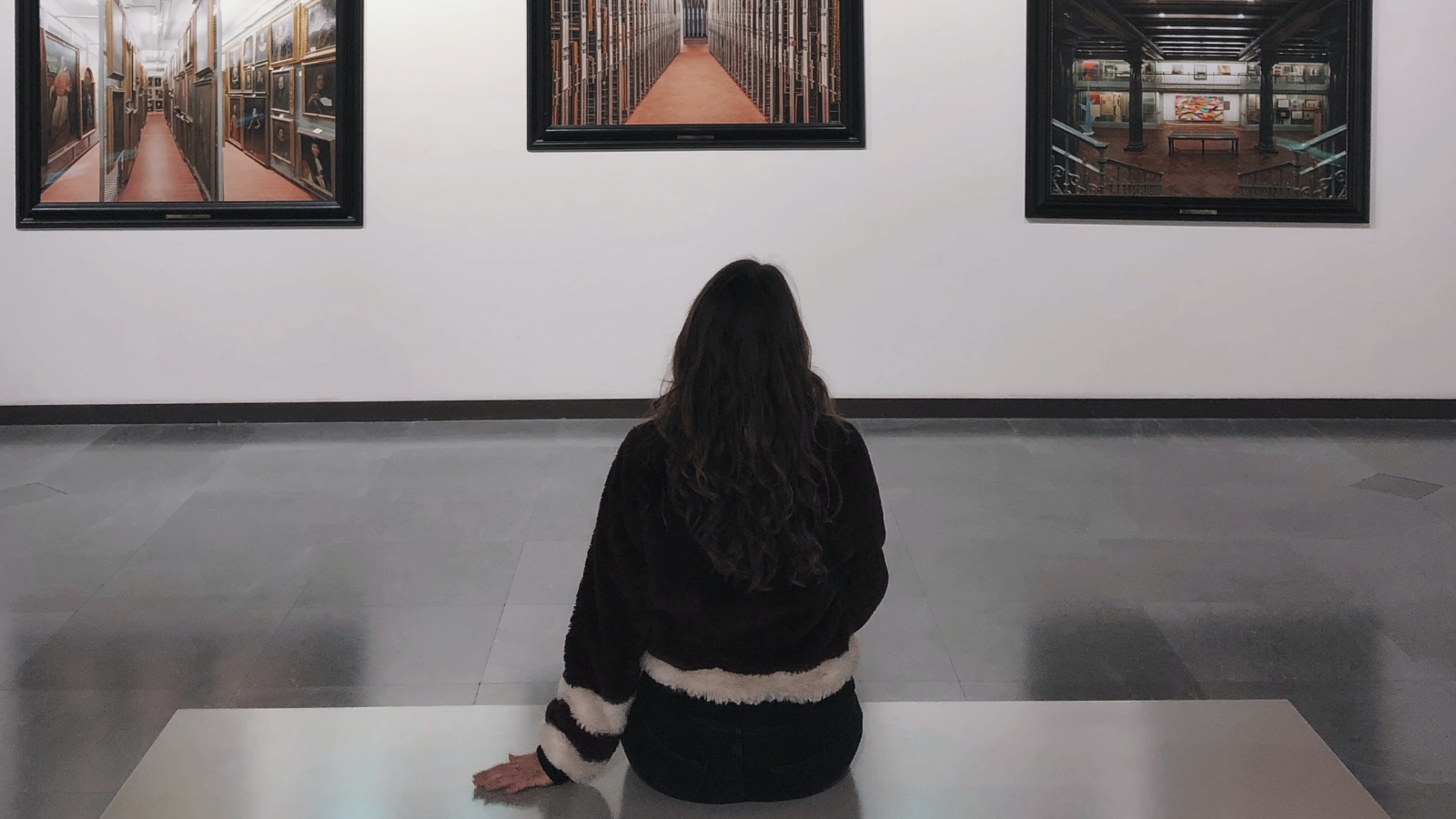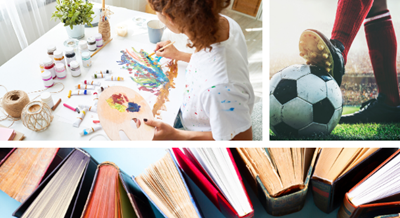
How does art link with our wellbeing and mental health?
Louise Quinn, Senior Art Therapist here at St Patrick's Mental Health Services (SPMHS), looks at the connections between art and wellbeing, and examines the practice of mindfulness through art.
Art and wellbeing
Research around around arts in health and art therapy supports the idea that engagement with the arts can improve and support overall mental health and physical wellbeing. There is research emerging, using brain imaging and measuring stress hormones, such as cortisol, to demonstrate how the arts positively impacts our physiology and enhances our cognitive function.
Participating in art-making and viewing art can involve a complex interaction of cognitive, emotional and physical processes. Art can stimulate these processes and positively impact our mood and reduce stress and anxiety. Art has also been shown to assist in reducing our perceptions of physical pain, help people become more engaged in healthcare treatments, and can help reduce the length of time spent in hospital.
Art in our environment
Having art in our environment can help to reduce stress and positively influence our experiences in clinical environments, such as hospitals. This can have a positive impact on everyone involved, including service users and caregivers, and it also enhances the working environment for staff.
Art can also play an important role in addressing work stress in staff and research has been conducted with medical students using art interventions to reduce burnout.
Resilience through art
Engaging with art after an illness can help promote health and resilience. Studies that support the role of the arts in health promotion and in the prevention of ill health showed a reduction in doctor visits and a reduction in hospital admissions.
Engaging with the arts can enhance communities by:
- reducing loneliness
- providing social interaction
- helping master new skills
- improving confidence
- increasing self-esteem.
Learning through art
Art can also impact our learning. There is research to suggest that using artworks in non-art-related education can help deliver better outcomes. Using artwork to process new information can be shown to enhance the learning process. This research suggests that art can have a positive effect on how we feel, making us more open to learning new information.
At times, we can turn to the arts to make sense of things, and the arts can express our experiences in a way that resonate strongly with us. In terms of recovery, art can be a powerful way to connect to ourselves and with others, provoking thought and reflection about a range of human experiences.
Mindfulness
Mindfulness is the practice of paying attention to the present moment, without judgement. Making or looking at art can help us in the practice of mindfulness. It is an approach that can be shown to be of great benefit in addressing stress, chronic pain, and depression, and in supporting overall mental health.
Mindful art
In recent times, there has been an increasing emphasis on linking art to mindfulness practice. Many galleries have started to offer mindfulness tours of their collections, and there is an emphasis on mindful approaches to art-making.
Art can be an effective way to be in the present moment, yet not all art-making is mindful. Mindfulness asks for a degree of attention and curiosity. So, if we are using art to distract, relax or "switch off", this is different to mindfulness, which is an active process of paying attention. Similarly, art can also be associated with the idea of "flow", an intense immersion in an activity where there is almost a loss of awareness of the passing of time. Mindfulness calls for awareness, but when "in flow", we generally don’t have this sense of awareness.
Viewing art mindfully
Examining mindfulness when looking at art is also interesting. Galleries and museums have incorporated mindfulness into how we view art, to help us enhance and deepen our experience of the works. In applying a mindfulness approach to viewing art, it may have the potential to harness both the benefits of mindfulness and the benefits of art to support our mental health.
A mindfulness-based approach to art suggests slowing down and adopting a non-judgemental approach to the artwork. It asks for openness and curiosity, both about ourselves and the artwork in front of us.
Real engagement with the picture can reveal things we might have missed if we approached the picture briefly in our walk through a gallery. It also helps us to not become too caught up with any preconceived ideas we may have about art and experience things in a new way.
Tips for approaching artwork mindfully
- Allow yourself to intentionally set aside some time to focus on the artwork.
- Pay attention to your body and breathing; allow yourself time to relax.
- Slow down to allow yourself to look at the picture, taking in all its surface, then allowing your eyes to be drawn to different aspects of the picture.
- Bring your attention gently back to the picture if you find yourself distracted from time to time or notice your mind wandering. Remember, this is a natural reaction to practicing mindfulness. Why not look at the details the brush has made to bring your focus into the present?
- Approach the artwork without putting any pressure on yourself. You may ask "what should I be looking at?". Why not look at what the artist has made a picture of - such as the subject matter? What shapes have been created? What are the colours, light and dark? Where has the artist placed things in the picture? Other aspects of the picture might include how it makes you feel, or a mood or atmosphere that has been created by the picture.
- Look at the surface of the picture and how it was made. What kind of materials have been used? Can you see traces of brushstrokes? What colours were applied first? What kind of marks has the artist made? Can you see the canvas or texture of the paper?
- Create your own artwork in response to this experience. Why not gather some art materials and continue the art of mindfulness?
Practicing art
If you're interested in trying some drawing or art-making yourself, you might like to try this wellbeing session from our Walk in My Shoes (WIMS) campaign. WIMS hosted a short drawing session with artist Don Conroy: why not watch the video below and draw with Don yourself?


